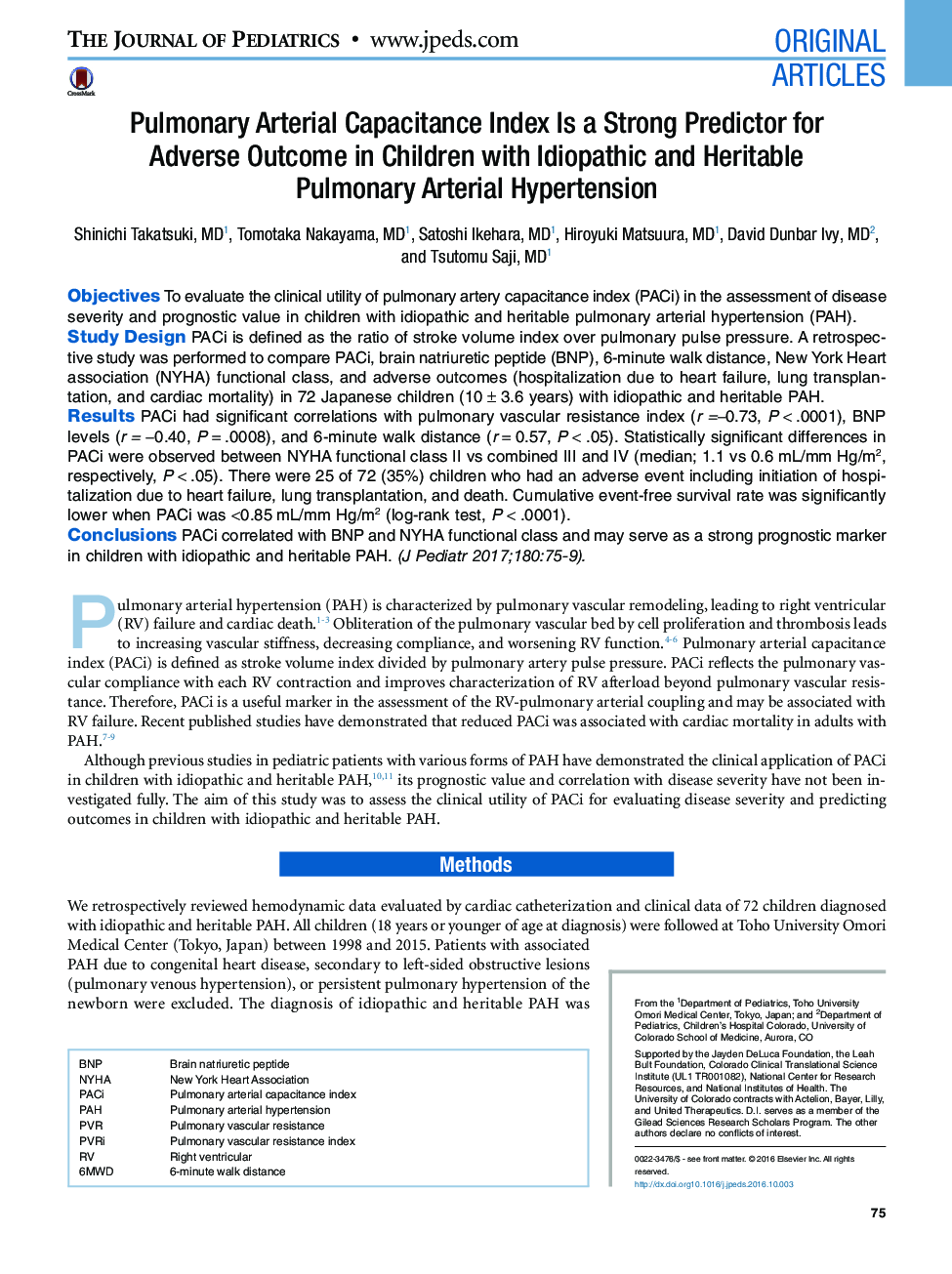| کد مقاله | کد نشریه | سال انتشار | مقاله انگلیسی | نسخه تمام متن |
|---|---|---|---|---|
| 5719287 | 1607420 | 2017 | 7 صفحه PDF | دانلود رایگان |
ObjectivesTo evaluate the clinical utility of pulmonary artery capacitance index (PACi) in the assessment of disease severity and prognostic value in children with idiopathic and heritable pulmonary arterial hypertension (PAH).Study DesignPACi is defined as the ratio of stroke volume index over pulmonary pulse pressure. A retrospective study was performed to compare PACi, brain natriuretic peptide (BNP), 6-minute walk distance, New York Heart association (NYHA) functional class, and adverse outcomes (hospitalization due to heart failure, lung transplantation, and cardiac mortality) in 72 Japanese children (10â±â3.6 years) with idiopathic and heritable PAH.ResultsPACi had significant correlations with pulmonary vascular resistance index (r =â0.73, Pâ<â.0001), BNP levels (r = â0.40, Pâ=â.0008), and 6-minute walk distance (râ=â0.57, Pâ<â.05). Statistically significant differences in PACi were observed between NYHA functional class II vs combined III and IV (median; 1.1 vs 0.6âmL/mm Hg/m2, respectively, Pâ<â.05). There were 25 of 72 (35%) children who had an adverse event including initiation of hospitalization due to heart failure, lung transplantation, and death. Cumulative event-free survival rate was significantly lower when PACi was <0.85âmL/mm Hg/m2 (log-rank test, Pâ<â.0001).ConclusionsPACi correlated with BNP and NYHA functional class and may serve as a strong prognostic marker in children with idiopathic and heritable PAH.
Journal: The Journal of Pediatrics - Volume 180, January 2017, Pages 75-79.e2
